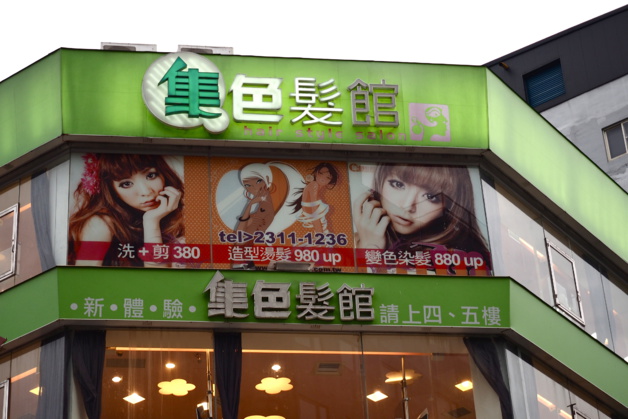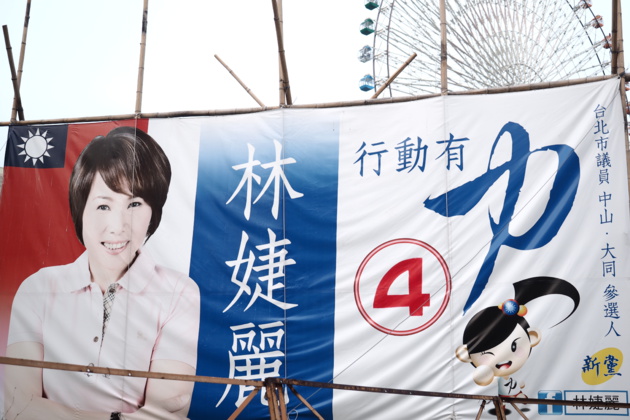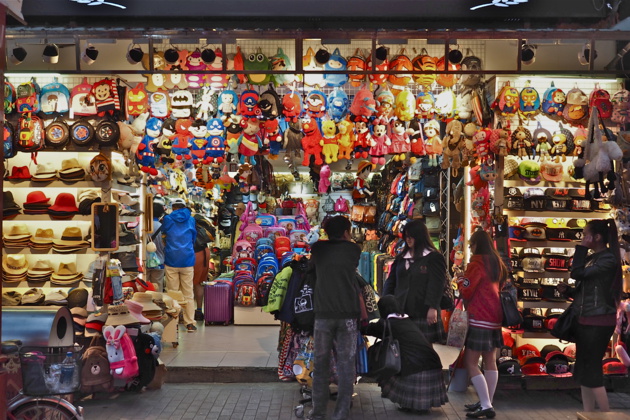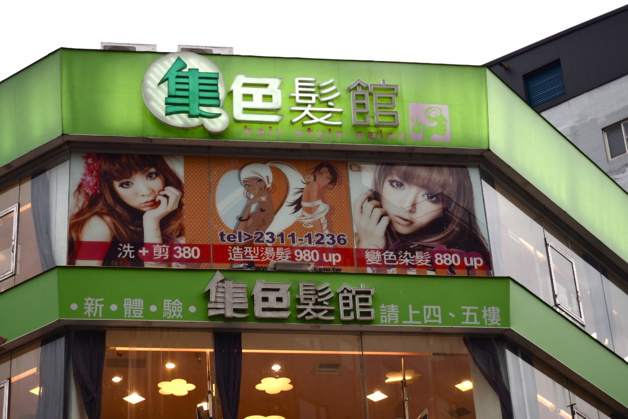
Crédit Zoé Piazza. Outside of a hairdressing salon in the district of Ximending, Taipei.
“Cute” is everywhere. In Taipei, one only needs to wander down the streets of Ximending or visit the night market of Shilin to confirm this: shops that sell Hello Kitty phone covers, little bags in the form of a baby panda and even figurines of puppies are abundantly present. But this interest shown for “cute”, or “可愛 » in Chinese, is far from being just a different consumption practice. It also represents a whole set of aesthetic and behavioural codes, especially amongst women. One proof of this is the use of contact lenses that enlarge the iris, giving the user an innocent look – or again adopting childish mimics when taking pictures. A true trend originated from Japan, widely spread to the whole set of East-Asian countries, the “ke’ai” tends to be a part of the “Asian identity”. But what kind of social facts hide behind this cultural phenomenon?
An indicator of a sexist structure in the society?
Literally, “可愛” means “adorable”. According to the Chinese language anthropologist Catherine Farris, the notion of “cute” is also, in reality, linked to two other features: weakness and femininity. She explains that the word refers to everything innocent, vulnerable and to things that can incite tender feelings and caring attention. This is exactly the type of criteria M. Wu, a 29-year-old electrician, brings up concerning women: “isn’t it the aim of a woman to be pampered and coddled?”
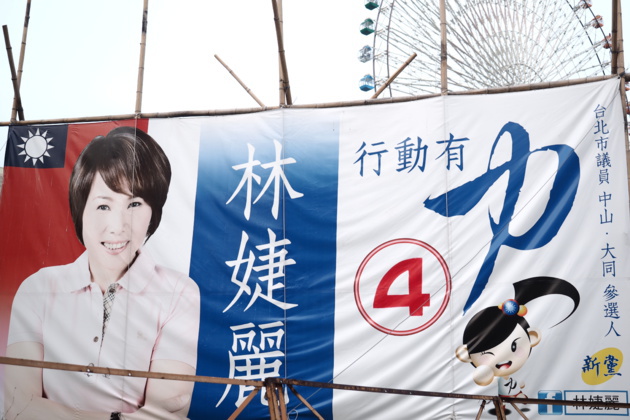
Just as Farris emphasizes, the juvenile sweetness can be seen as an intrinsic feature of the feminine sex and something that is expected of every woman – especially of those at the age of marriage. When asked to give his main criteria for choosing a spouse, M. Wu mentioned docility (聽話 tinghua), listening skills (體貼 titie) and beauty (漂亮 piaoliang). In the context one has to remember that the Confucian criteria for an exemplary wife require that she be always humble, considerate and reverential towards her husband.
A Modern incarnation of traditional principles?
Tzu-I-Chang, a researcher at the University of Washington, challenges this idea in her paper “The power of cuteness – female infantilization in urban Taiwan”. He says the Confucian model of an ideal housewife was largely promoted by the rule of Kuomintang that governed Taiwan between 1949 and 2000. But this is something that, in the Taiwan of today, is tending to disappear: economic growth and the growing participation of women in the labour market are making the image of a housewife look old-fashioned. Tzu-I-Chang explains that even if the concept of “cute” has for a time represented the unconscious perpetuation of codes of conduct that reflect the unbalanced social circumstances, this no longer is reality. Nowadays, behaving in an adorable way is no longer something a Taiwanese woman has to endure – today she is fully aware of it. In other words, the “cute” seems to have slipped from being a form of habit to being a form of performance: something that used to be a sign of conformism and social submission has become a conscious and voluntary illusion.
From habit to performance
The fact that women truly are economically independent and no longer need men to lead their lives is irremediably threatening the patriarchal order of the society. This is where the meaning of the concept of “cute” truly lies: the aim is to give the men the impression that the women still depend on them. “An effective way for women to avoid confrontation is to adopt symbolic gestures of a child”, explains Tzu-I-Chang. To conclude, “the Taiwanese woman’s tendency and the greedy consumption linked to “cute” is therefore not so much of a compensation of a lack of power, but an affirmation of power”. Here the researchers cite the famous Taiwanese writer and feminist Li Ang, who declared in an interview: “I think I am a woman who has succeeded, in the sense that I am completely independent without appearing as threatening”.
A generalized phenomenon
Consequently, the “cute” shouldn’t be – at least anymore – considered as a sign of a macho structure in the society. This detachment of the concept from an indicator of gender is exactly what would enable it to be spread into the entire social body, since the concept of “cute” is far from being limited to children and young women in Taiwanese society. It tends to be seen in every sector and every social class, amongst all ages and genres. One fairly revealing example (when it comes to the difficulty for Western people to understand this craze about everything cute), is the amazement expressed by the author of the blog Crackingtheegg towards a recruitment campaign of the Taiwanese national navy, conducted a few years back using dolls to encourage the youth to enlist in the army.
In the political field, Chen Shui-bien has managed to leave a lasting impression by making a public appearance disguised as Peter Pan, Santa Claus and even Superman, while he was the mayor of Taipei. Furthermore, during elections it is frequent to see candidates with dolls made to their effigy or even representing them manga style – as was the case in the local elections last November (see image). The latest example: in October 2014 the airline Eva Air created an entire series of airplanes decorated with Hello Kitty colours, to celebrate the 40th anniversary of Sanrio’s character.
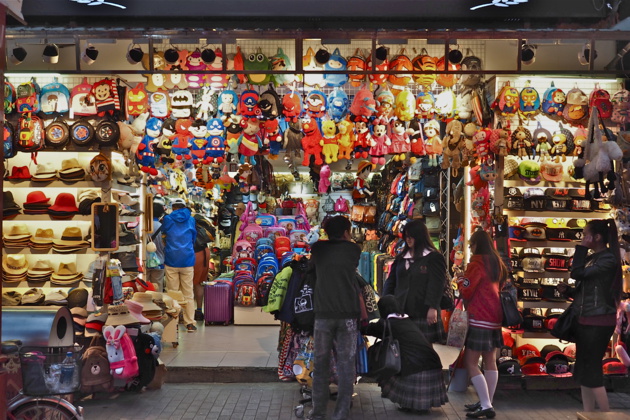
The army, politicians as well as the airline are surfing on the wave of a trend that does not seem to be losing popularity. Less a cause than a consequence of the phenomenon already well anchored in the society, the spreading of “cute” is self-sustaining: the more the concept spreads, the less it is considered shocking to see it reach areas originally considered ill-adapted to the concept (the army, politics etc.) – the more the phenomenon spreads, et cetera et cetera. Until consumers get tired of it, the concept seems to have a bright future ahead of it!














